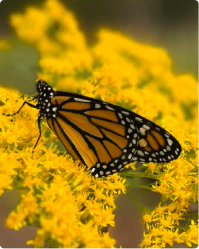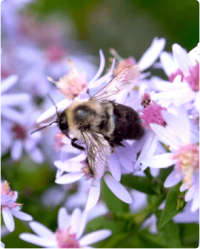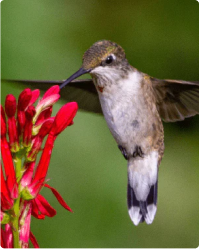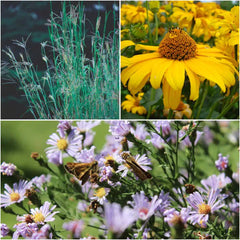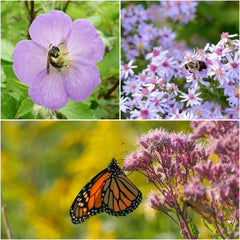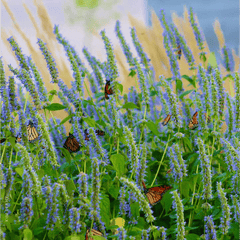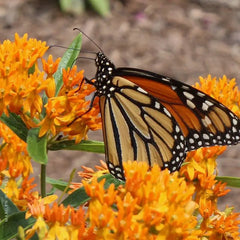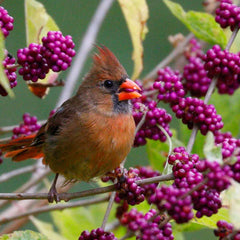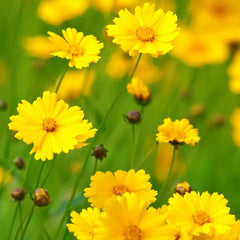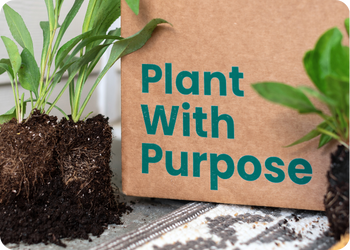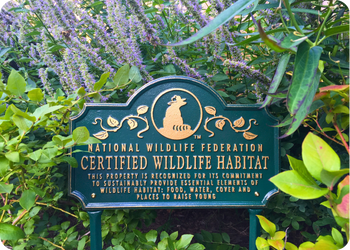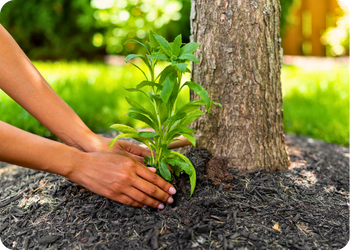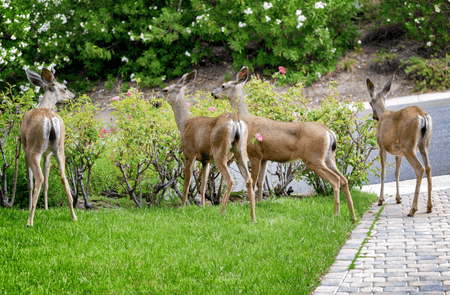Guardians of Your Garden: How Native Plants Help Control Pests and Diseases While Nurturing Wildlife

Native Plants As Nature's Pest Control

In the world of gardening, it's easy to underestimate the power of native plants. These local wonders are not just a celebration of biodiversity; they're also formidable defenders of your garden.
The quest to control pests has often led to the widespread use of chemicals and pesticides. However, there's a more natural and eco-friendly approach to pest management: native plants. These indigenous wonders have evolved alongside local pests and have developed their own ingenious ways of deterring them. In this blog post, we'll explore how native plants in home gardens can act as nature's pest control, keeping those unwanted garden intruders in check.
The Native Advantage
Native plants have an inherent advantage in pest resistance. They've adapted over thousands of years to cope with local conditions, including the challenges posed by indigenous pests. Here's how they achieve this remarkable feat:
Chemical Defense Mechanisms
Many native plants produce chemical compounds that make them less appealing or even toxic to local pests. For example, milkweed produces latex sap that deters herbivores, and some oaks release tannins that inhibit the growth of insect larvae.
Coevolution with Local Insects
Native plants have coevolved with local insects, leading to a delicate ecological balance. Some insects have become specialized feeders on specific native plants, while these plants have developed mechanisms to withstand the impact of herbivory.
Biodiversity Promotes Pest Control
Planting a diverse array of native species in your garden creates a complex tapestry that makes it challenging for pests to establish strongholds. A variety of native plants can disrupt pest lifecycles and reduce the likelihood of infestations.
Native plants can help to combat common garden pests in a number of ways.
They attract beneficial insects, which can help to control pests. Beneficial insects are predators or parasites of pests, and they can play a significant role in keeping pest populations under control. For example, ladybugs eat aphids, lacewings eat mealybugs, and ground beetles eat a variety of pests.
They provide food and shelter for other natural enemies of pests. In addition to beneficial insects, other natural enemies of pests, such as birds, bats, and frogs, can also play a role in keeping pest populations under control. Native plants can provide food and shelter for these natural enemies, helping them to thrive and keep pests in check.
They are less susceptible to pests than non-native plants. Native plants have evolved alongside native pests, and they have developed a variety of defenses against them. As a result, native plants are often less susceptible to pests than non-native plants.
They create a more diverse ecosystem, which can make it more difficult for pests to establish themselves. A diverse ecosystem is more resilient to pests than a less diverse ecosystem.
Common Garden Pests & How Native Plants Help
Here are some specific examples of how native plants can combat common garden pests:
Aphids: Ladybugs, lacewings, and hoverflies are all predators of aphids. Native plants that attract these beneficial insects can help to keep aphid populations under control.
Spider mites: Spider mites are tiny mites that can suck the sap out of plants, causing them to yellow and wilt. Native plants that are resistant to spider mites can help to reduce the risk of spider mite damage.
Whiteflies: Whiteflies are small, white insects that can suck the sap out of plants and transmit diseases. Native plants that are resistant to whiteflies can help to reduce the risk of whitefly damage.
If you are looking for ways to reduce the use of pesticides in your garden, planting native plants is a great option. Native plants can help to combat common garden pests in a number of ways, and they can also create a more beautiful and sustainable garden.
3 Pest-Resistant Native Plants
Let's take a closer look at a few native plants renowned for their pest-resistant qualities:
Butterfly milkweed (Asclepias tuberosa): This native milkweed is a host plant for monarch butterflies but is also unpalatable to many herbivores due to its toxic sap. Choose this as a butterfly magnet plant over invasive butterfly bush.

Bee Balm AKA Wild Bergamot (Monarda fistulosa): Wild bergamot's aromatic foliage is not favored by deer or rabbits, making it a great choice for pest-prone areas.
Purple Coneflower (Echinacea purpurea): Echinacea's tough leaves and spiky seed heads are unattractive to browsing animals, and it can thrive even in challenging conditions.
How The Use of Pesticides Affects Wildlife
Pesticide use in lawns and home gardens can have a number of negative effects on local wildlife.
Direct poisoning: Wildlife can be poisoned by pesticides if they eat or drink contaminated food or water, or if they come into direct contact with pesticides through their skin or fur.
Secondary poisoning: Wildlife can also be poisoned indirectly by eating prey that has been exposed to pesticides. For example, a bird that eats an insect that has been sprayed with pesticide could become poisoned.
Habitat loss: Pesticides can kill the plants and insects that wildlife rely on for food and shelter. This can lead to habitat loss and fragmentation, which can make it difficult for wildlife to survive and thrive.
Reproductive problems: Exposure to pesticides can cause reproductive problems in wildlife, including infertility, miscarriages, and birth defects.
Immune system suppression: Pesticides can also suppress the immune system of wildlife, making them more susceptible to diseases.
What animals or wildlife are affected by pesticides at home?
Some specific examples of how pesticide use can affect local wildlife include:
Bees: Bees are essential pollinators that play a vital role in the ecosystem. However, bees are highly sensitive to pesticides, and exposure to pesticides can kill them.
Birds: Birds are also sensitive to pesticides, and exposure to pesticides can cause a variety of problems, including poisoning, reproductive problems, and immune system suppression.
Butterflies: Butterflies rely on native plants for food and shelter. Pesticide use can kill native plants and disrupt butterfly populations.
Fish and other aquatic life: Pesticides can runoff into waterways and pollute aquatic habitats. This can poison fish and other aquatic life, and disrupt the aquatic ecosystem.
In addition to these specific examples, pesticide use can also have a more general negative impact on local wildlife by reducing biodiversity. Biodiversity is the variety of life in an ecosystem, and it is essential for the health and function of the ecosystem. Pesticide use can kill a variety of different plants and animals, which can reduce biodiversity and make the ecosystem less resilient to disturbances.
Go Native
By choosing plants that have developed natural defenses against local pests, you can reduce the need for chemical interventions and create a garden that thrives in harmony with its environment. Embrace the resilience and wisdom of native plants, and watch as they help keep your garden healthy and pest-free, all while providing a sanctuary for local wildlife. In this partnership with nature, everyone wins – from the plants to the wildlife to the gardener.
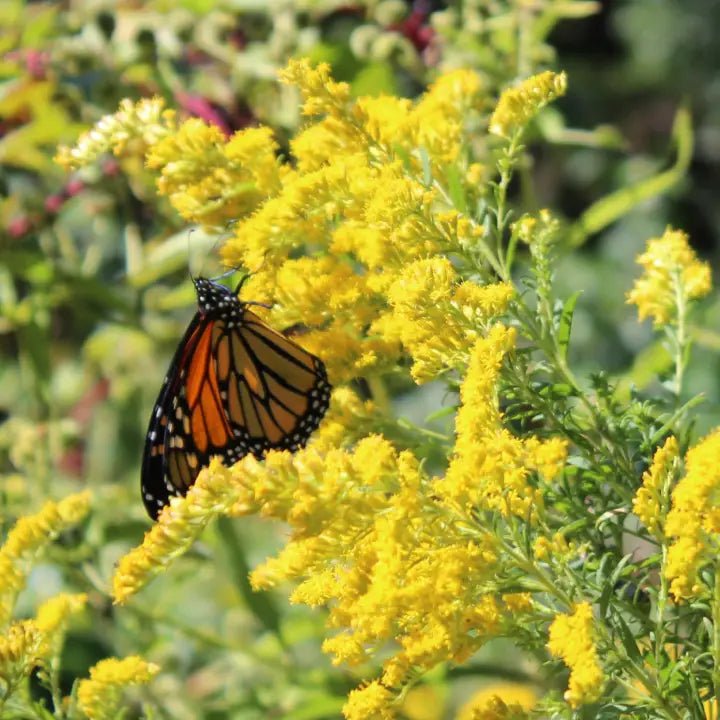
Find Native Plants by Zip Code
We took the guesswork out of planting native. Check your zip to see what ships!
